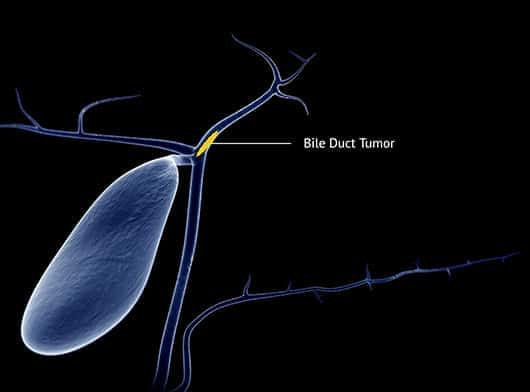- Surgery
- Radiation
- Medical Oncology
- Surgery is the primary mode of treatment in Cholangiocarcinoma. The type of surgery depends on the location of the tumor. The following types of surgery are used to treat bile duct cancer:
- Extrahepatic Bile duct resection (Removal of the Bile Duct) : Removal of a part of the bile duct when the tumor is small and confined to the extrahepatic bile duct without involvement of pancreas and liver.
- Partial Hepatectomy : Removal of the part of the liver affected by cancer. The section of tissue removed may be a wedge of tissue, an entire lobe, or a larger part of the liver, along with some normal tissue around it.
- Whipple Procedure : In distal Cholangiocarcinoma, a Whipple procedure is required to completely remove the tumor. Whipple procedure involves the removal of Head and neck portion of pancreas along with duodenum, distal stomach, bile duct, gall bladder and proximal jejunum.
- Liver Transplant : This is an option in selected cases as deemed fit by the treating doctor. Prior to a liver transplant, the patient is treated with either radiation and/ or chemotherapy.
-
Palliative Biliary Drainage :It is a procedure to restore the flow of bile and relieve jaundice and can be done either through ERCP or Percutaneous transhepatic biliary drainage.
In certain cases a surgical bypass procedure such as hepaticojejunostomy is done. Biliary drainage is required to relieve jaundice and then initiate systemic therapy for management of cholangiocarcinoma.


